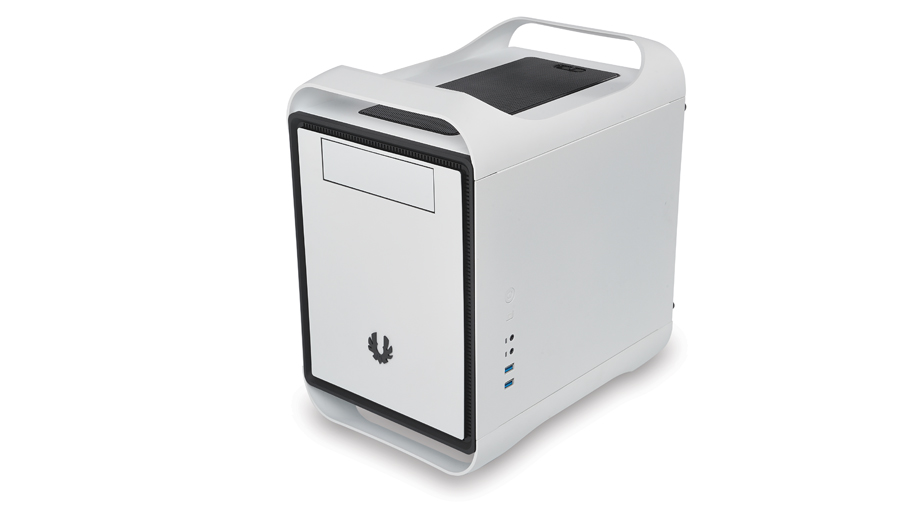TechRadar Verdict
Pros
- +
Well designed
- +
Good price
- +
Will hold a full gaming rig
Cons
- -
Some space limitations when fully loaded with parts
Why you can trust TechRadar
There's no doubting the striking looks of the BitFenix Prodigy owe more than a little to the serious, brushed aluminium stylings of the Mac G5. The over-and-under looped handles are a dead giveaway, aren't they?
That, though, is over-simplifying things a touch, as there's much more to this case than just the outsides. Internally BitFenix has worked hard to create a space in which to create a top-end gaming machine without compromise.
A few years ago that wouldn't have been possible given the limitations of mini ITX motherboards at the time. Now you can get a fully fledged Z77 board that will offer all the functionality of boards twice their size.
Space to spare

With a horizontally arranged motherboard sat atop the PSU cage there's a surprising amount of space left inside to complete your PC build. There's even enough clearance above the board to allow the use of the chunkiest of CPU coolers.
Okay, so the NoFan isn't going to get a look in here, but a decent air-cooler will fit straight in. There's even space in the roof for a dual-width water cooler, such as the Corsair H100, but you'd have to sacrifice the optical drive to do that because of the space restrictions.
If that sounds like a deal-breaker, think about the last time you actually used an optical drive in anger…
Because of the removable HDD cage in the middle there's also enough room in the Prodigy to fit the biggest of dual-slot graphics cards. Even the lengthy AMD cards fit with room to spare. The grill on the side panel allows them to suck in all the air they need.
Sign up for breaking news, reviews, opinion, top tech deals, and more.
But you take out the HDD cage and then what? You still need storage, right? Well, yes, you do lose a good chunk of the available HDD racks. However, there's still space for a pair of 3.5-inch HDDs in the remaining rack and in the far side are slots for another pair of 2.5-inch drives - in other words, all the space a gaming rig needs.
Obviously in a wee chassis like this you're going to run out of room somewhere, but really the only place we got cramped when putting together a rig in this machine was with the PSU. It ought to be a simple matter of just sliding in the box-o-power and screwing it in, but despite not using an overly large supply we struggled to squeeze it in.
The problem wasn't that the box wouldn't fit, it was that the cables, that inevitably have to spew from the back, were mighty cramped. There's a good chance that a modular PSU simply wouldn't have been usable at all. But with that being the only issue we encountered with the Prodigy that's a build happily done.
The design is quite lovely, especially in the white option, though we did find a lot of dirty fingerprints on the so-called SoftTouch Surface once we'd closed it up. For the grubby the black option might be a better way to go.
But if space is an issue on your desktop, and compromise doesn't sit happily in your vocabulary, then the Prodigy is the perfect chassis to drop your gaming bits into for safe-keeping.
